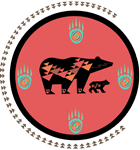Developed and tested skills- and community-based approaches to prevent substance abuse among 1,396 Native American 3rd–5th graders. After pretest measurements, Ss were divided randomly by school into 2 intervention arms and 1 control arm. Following intervention, Ss completed posttest and 3 annual follow-up measurements. Youths assigned to the intervention arms learned cognitive and behavioral skills for substance abuse prevention. One intervention arm additionally engaged local community residents in efforts to prevent substance use among Native American youth. Outcome assessment batteries measured youths' reported use of smoked and smokeless tobacco, alcohol, and marijuana. Over the course of the 3.5-year study, increased rates of tobacco, alcohol, and marijuana use were reported by youths across the 3 arms of the study. Though cigarette use was unaffected by intervention, follow-up rates of smokeless tobacco, alcohol, and marijuana use were lower for youths who received skills intervention. Community intervention components appeared to exert no added beneficial influence on youths' substance use. Gender differences were apparent across substances, measurements, and study arms, with girls smoking more cigarettes and boys using more smokeless tobacco, alcohol, and marijuana. (PsycINFO Database Record (c) 2016 APA, all rights reserved)
This website is supported by Grant Number 90CZ0034-01-00 from the Children’s Bureau within the Administration for Children and Families, a division of the U.S. Department of Health and Human Services. Neither the Administration for Children and Families nor any of its components operate, control, are responsible for, or necessarily endorse this website (including, without limitation, its content, technical infrastructure, and policies, and any services or tools provided). The opinions, findings, conclusions, and recommendations expressed are those of the author(s) and do not necessarily reflect the views of the Administration for Children and Families and the Children’s Bureau.

